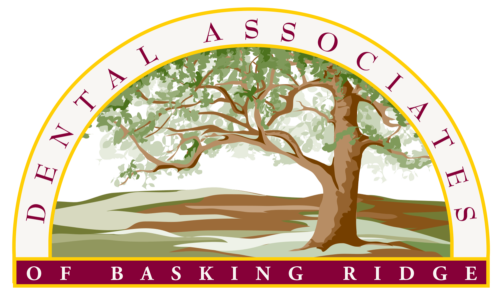
While it may sound like an advanced maneuver, tongue thrusting is a prevalent and frequently unconscious habit observed in patients. This condition involves the tongue pressing against the teeth during deglutition, speech, or even at rest. Over time, this sustained pressure can lead to significant dental issues. Please continue reading as we explore the potential treatment options for tongue thrusting and how our general dentistry/dentists located in Basking Ridge & Morristown, NJ can help ameliorate this dental concern.
What is the Cause of Tongue Thrusting?
As its name suggests, tongue thrusting is a swallowing pattern in which the tongue pushes forward against or between the front teeth, rather than resting on the gums or the alveolar ridge. During normal swallowing, the tongue is supposed to be positioned on the gum area behind the front teeth. This can place pressure on your teeth, leading to misalignment, gaps between teeth, and even changes in facial structure. Additionally, it can affect your speech, causing lisping or difficulty with certain sounds.
This condition is common in infants; it’s usually outgrown by around six months old. If the condition continues past this age, it can become problematic. There are several causes for tongue thrusting to continue into childhood and adulthood, including:
- Poor swallowing
- Poor oral muscle strength or tone
- A family history of the habit
- Allergies tongue-tie
- Use of baby bottles or pacifiers
- Thumb sucking
- Certain environmental factors
As mentioned, although some infants and toddlers naturally outgrow this habit, those who continue it into later childhood or adulthood will likely need treatment. As such, it’s crucial to know the signs:
- Visible tongue positioning between the teeth
- Inability to achieve complete lip closure
- Persistent mouth breathing
- Presence of an open bite
- Challenges with eating
- Speech impediments (like a lisp)
- A tongue that appears longer than typical
What Treatment is Available?
Tongue thrusting in adulthood can be treated using a combination of myofunctional therapy, speech therapy, and sometimes orthodontic interventions. Myofunctional therapy can be used to train the tongue to rest properly and swallow correctly. This involves specific exercises and techniques to strengthen the muscles surrounding your mouth and retrain your tongue. Speech therapists can help retrain the positioning of your tongue for speech, swallowing, and chewing.
Orthodontic treatments like tongue cribs can be used to create a physical barrier to prevent the tongue from thrusting forward. Braces and Invisalign can also be used if it has caused misalignment of teeth. A trained professional can assess the tongue’s position, swallowing patterns, and any related issues. Your dentist can diagnose tongue thrust.
Untreated tongue thrust can result in long-term speech impediments, such as a lisp on certain sounds. It can also cause the tongue to protrude between the teeth and lead to an elongated facial shape.
At Dental Associates of Basking Ridge, we are prepared to help you maintain your oral health. Contact our office today to schedule an appointment.






